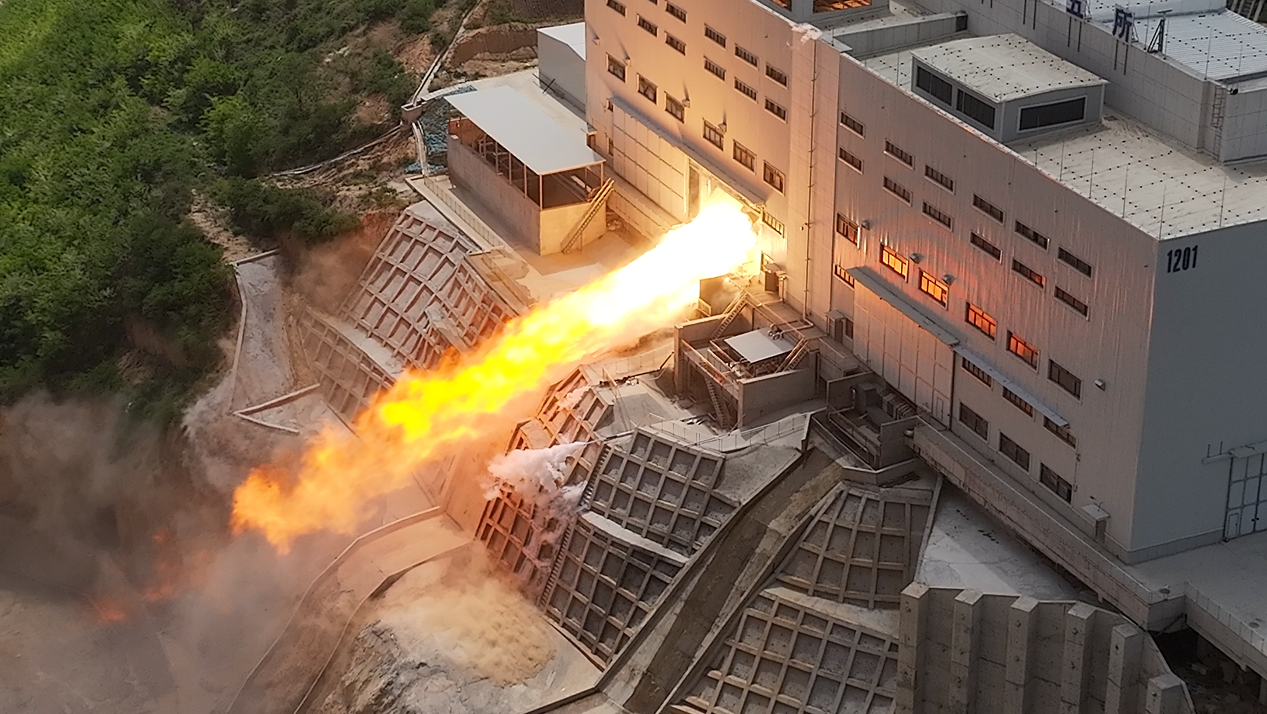
A 130-ton pump rear swing liquid oxygen kerosene engine has completed the largest thrust and most complex ignition test. Photo: Sixth Academy of the China Aerospace Science and Technology Corp
A 130-ton pump rear swing liquid oxygen kerosene engine, developed by the Sixth Academy of the China Aerospace Science and Technology Corp (CASC), has completed the largest thrust and most complex ignition test in the history of China's liquid power development on Sunday, with a total thrust of over 500 tons.
This is the first time that the large thrust liquid oxygen kerosene engine used the four-engine parallel ignition test. By combining four technologically mature engine machines together, it not only carries out a comprehensive test of itself, but also lays a solid foundation for the first flight of the new rocket this year.
The four-engine parallel ignition test is not simply a matter of bundling four machines together. It can also provide larger thrust for the rocket and reduce the complexity of the system to a certain extent.
The pump rear swing engine is a kind of engine with the swinging device rear-mounted, which can effectively reduce both the engine work space and weight of the engine structure. Compared with the existing 120-ton liquid oxygen kerosene engine, the pump rear swing engine has larger thrust, higher performance and more compact structure. More engines can be laid out in the same rocket diameter, effectively improving the rocket carrying capacity.
Li Bin, vice president in charge of the Sixth Academy and chief engineer of the liquid oxygen kerosene engine, said the successful run of the four-engine parallel test has verified the coordination of the pump rear swing engine's multi-machine work and the reliability of the work under the maximum force and heat environment, proving that the engine is fully equipped with the conditions for the flight application.
The engine will be processed after testing and will be delivered for flight applications.
In a statement the CASC provided to the Global Times, the space giant has vowed to prioritize in 2024 the development for cost-efficient solid rocket engines, YF-102 series liquid rocket engines and YF-209 liquid oxygen methane reusable engines, in order to meet the urgent demand in the commercial market.



